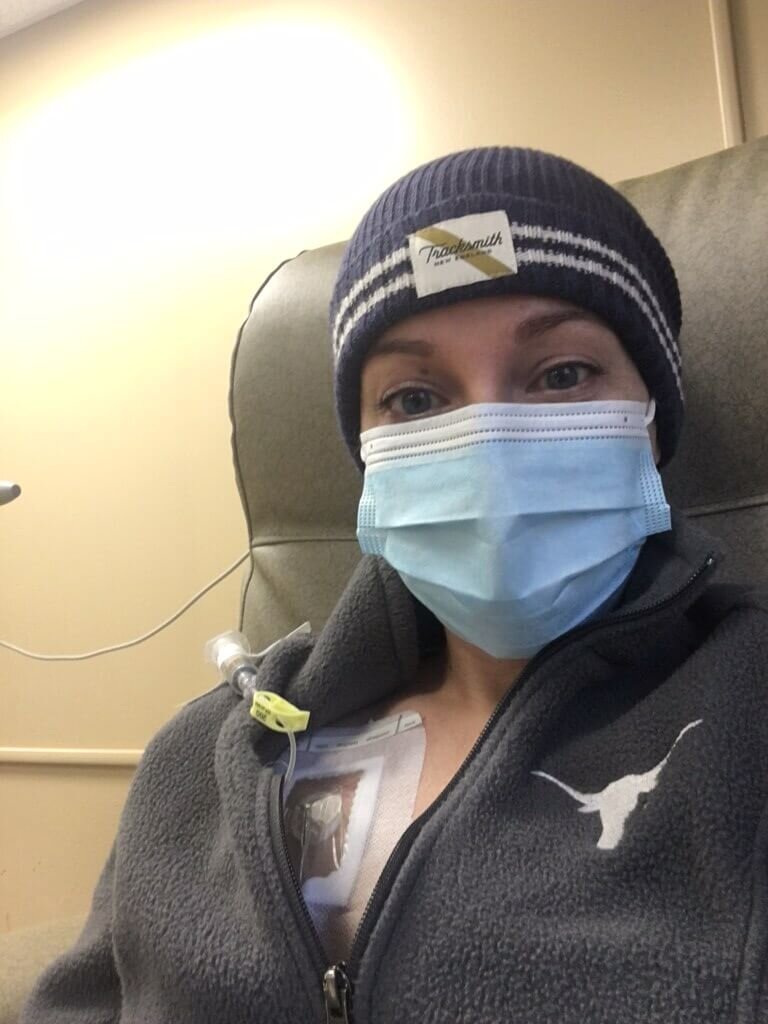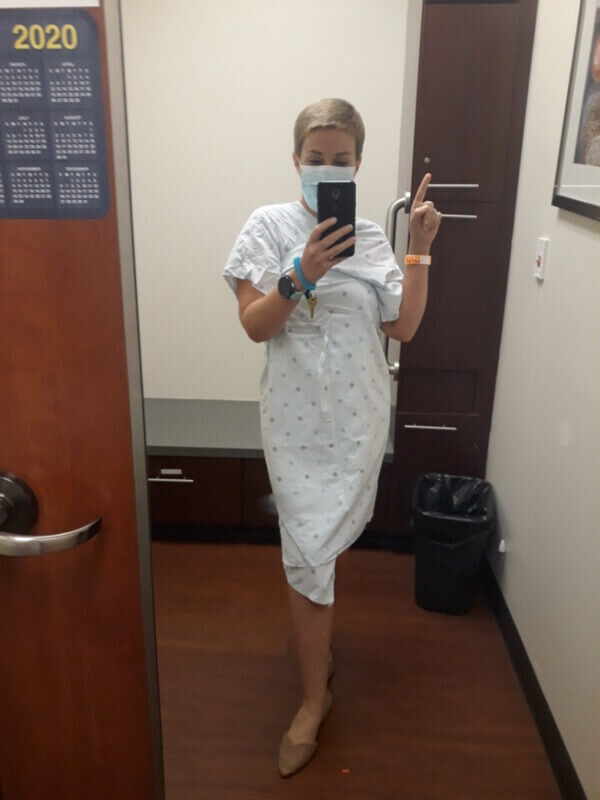Look For Confetti: Breast Cancer During A Pandemic
Guest post by Kcie Driggers. Reposted from October 2022.
In late 2020, my gynecologist found a lump in my left breast during a routine appointment that I had cancelled and delayed for almost a full year due to the COVID-19 pandemic.
I was 36, a full nine years younger than the age that is recommended for women to start having mammograms. Given my family history of breast cancer, my doctor encouraged me to schedule a mammogram as soon as possible. I knew it was cancer when after the scan, the radiologist pulled me into her office and scheduled me for a biopsy. She told me I was in luck, she had an opening the next morning. Many women my age have their lumps or symptoms dismissed by their health care providers. We are often told that we are "too young" for cancer, and to "not worry" while keeping an eye on the area of concern.
A biopsy confirmed the presence of cancer in my left breast and several of the lymph nodes under my left arm. I do not remember the first appointment with my medical oncologist, but I do remember walking out of her office with a binder full of information about cancer and a coupon for a free t-shirt. The next two weeks were a blur.
““I do not remember the first appointment with my medical oncologist, but I do remember walking out of her office with a binder full of information about cancer and a coupon for a free t-shirt.””
Staging is the process of finding out what type of cancer is in your body, how much cancer is there, and if it has spread to other areas. For me, the process included scans of my breasts, the organs in my head / chest / abdomen, my heart, and my bones. By the end of the staging process, I was so tired of being poked by needles that I had a panic attack in a CT machine and ran down a hallway in an open backed hospital gown.
My medical oncologist used those scans to determine what type of cancer I had, how she was going to stage it, and what my treatment plan would look like. I was diagnosed with Stage II triple negative breast cancer, and my treatment plan would include six months of chemotherapy, surgery, radiation, and depending on how the cancer responded to chemotherapy, the possibility of a longer term pill-based chemo.
While triple negative breast cancer disproportionately affects African American women, it also affects people who have the BRCA1 genetic mutation, such as myself. It is considered aggressive, harder to treat, and has a higher recurrence rate than hormone receptor positive cancers. Since I have the BRCA1 genetic mutation, it was also strongly encouraged that I have a bilateral mastectomy and in the future, a total hysterectomy.
““The internet can be a dark and scary place when you receive a potentially life limiting diagnosis. I kept reading the words “aggressive cancer” and “poor prognosis”. All I could think about was my five year old daughter and what her future might look like without her mom. Fortunately, the internet is also full of people who are willing to share their stories. I recycled the informational pamphlets full of smiling cancer patients that my oncologist sent me home with. They all had cute head scarves and were drinking tea, none of them were hiding in a bathroom at work doom scrolling the internet. “”
The internet can be a dark and scary place when you receive a potentially life limiting diagnosis. I kept reading the words "aggressive cancer" and "poor prognosis.” All I could think about was my five year old daughter and what her future might look like without her mom. Fortunately, the internet is also full of people who are willing to share their stories.
I recycled the informational pamphlets full of smiling cancer patients that my oncologist sent me home with. They all had cute head scarves and were drinking tea, none of them were hiding in a bathroom at work doom scrolling the internet. Instead, I turned to online communities where people bravely shared their experiences with this disease in real time.
In an effort to reduce the risk of exposing immunocompromised patients to COVID 19, the oncology center where I chose to receive treatment restricted who was allowed to enter the building. This meant that I attended every appointment and chemotherapy treatment alone. I have been told that the infusion room used to be a lively place with volunteers, friends, and therapy dogs.
During my first infusion, I watched the nurses throw confetti at a fellow patient who had just finished her last round of chemotherapy. I noticed that there were tiny bits of confetti on the floor of the entire oncology building, and it became a mental game to find at least one piece of confetti on the floor when I went in for treatment or appointments with my doctor. My mantra throughout active treatment has been to "look for confetti.”
““My mantra throughout active treatment has been to ‘look for confetti.’””
It was terrifying to be diagnosed with cancer during a global pandemic. I had to make difficult decisions around whether it was safe to continue working and sending my daughter to preschool, but at no point did I feel alone in having to make these decisions. The worries and concerns that I had were normalized as families wrestled with the same decisions, this was not something specific only to the cancer community. I felt a sense of connection with other people's grief as we collectively cancelled weddings, trips, holidays, and seeing loved ones. I felt a sense of responsibility for every patient in the cancer center as we took precautions and made sacrifices to keep each other safe.
I received my cancer diagnosis in October of 2020, the start of Breast Cancer Awareness Month. This is the month where companies splash pink ribbons all over merchandise and marketing campaigns, they commoditize our grief and medical trauma. October 2021 looks different for me as I had a pathological complete response to chemotherapy and am currently cancer free.
This month, we can remain aware of how breast cancer impacts men and women of all ages and races, but we can consciously raise our awareness around advocating for ourselves and others who have been affected by cancer.
This month, I would encourage you to donate directly to organizations that seek to address funding discrepancies in research. Metavivor.org is an organization that raises awareness around stage 4 breast cancer, and awards funding to researchers who focus their research on treating and curing metastatic breast cancer.
The Triple Negative Breast Cancer Foundation offers support and information to people diagnosed with triple negative breast cancer, as well as research grant support to fund projects aimed at finding targeted treatment for triple negative breast cancer.





